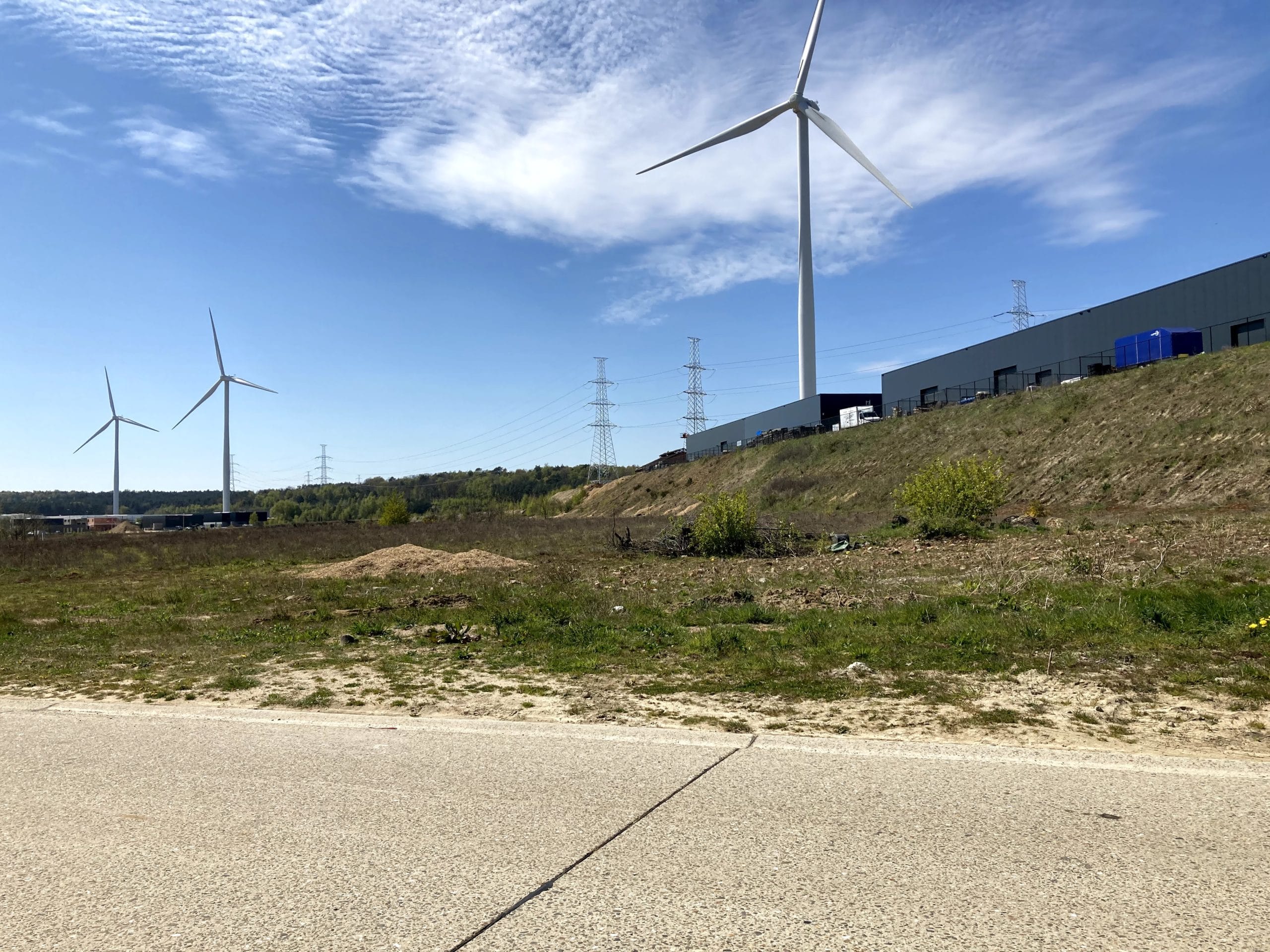
Coronavirus monitor
The Coronavirus Monitor provides an update on the impact of the coronavirus crisis on Limburg’s economy, using only official and confirmed figures from government sources. This offers an objective picture of the recent economic situation. The monitor is regularly updated with new monthly figures.
Latest update: 29 August 2022
Synthesis
- In June 2022, Limburg had 8,869 employees who were temporarily unemployed for one or more days as a result of COVID or related force majeure. This brings temporary unemployment below the pre-pandemic level for the first time since this scheme has been in place. This is a decrease of 11.0% compared to February 2020.
- At the end of July 2022, Limburg had exactly 23,172 jobseekers without work. This is a decrease of 7.6% compared to July 2021. In Flanders, the decrease is slightly less pronounced on average.
- In July 2022, the jobseekers rate in Limburg was 5.8%, as it was in Flanders. This was 6.3% the previous year.
- For the seventh month in a row, there was a rise in the number of vacancies in Limburg in July 2022 (on an annual basis). VDAB (Flemish Public Employment Service) received 3,080 vacancies from companies in Limburg. This is 121 (or 4.1%) more than in July 2021. In Flanders, there was an average decrease (-6.0%) for the first time in a long time.
- In June 2022, 589 new companies were established in Limburg. This was in line with the number of new companies in the same month the previous year (-0.5%). On average, this decrease was stronger in Flanders (-9.9%).
- After a slight improvement during the first half of 2022, business confidence in the Limburg business community has been falling sharply since early summer. Especially in construction and manufacturing, the business cycle curve is taking a sharp dip.
Temporary unemployment due to COVID
From 1 July 2022, the procedures for applying for temporary unemployment at the NEO were revised. As a result, no new updates will be provided temporarily.
In June, 59,616 employees were unemployed for at least one day due to COVID or related force majeure across Flanders. Of those, 8,869 were in Limburg companies. As such, following the latest corona wave, the temporary unemployment rate is falling for the fifth month in a row, and this to a level about 1,100 temporarily unemployed lower than the number of economic unemployment cases before the coronavirus outbreak.
Between January and June 2022, the number of temporary unemployed in Limburg fell by about 19,700 (−69.0%). In Flanders, the decrease was similar (−63.5%). It is important to note that the latest figures are provisional (usually they are still adjusted upwards by the NEO).
Across Flanders, 10,518 employers called upon the system of temporary unemployment in June. Of these, 1,649 employers are active in Limburg, or 15.7% of all employers in Flanders with temporary unemployment. Again, there has been a decrease since the most recent coronavirus wave. However, this drop is somewhat less pronounced in Limburg (−63.1% since January 2022) than the average in Flanders (−65.3%).
Viewed over a wider period, namely compared to a year earlier, the number of temporarily unemployed in Limburg fell by 56.2%. This is obviously related to the still relatively high level of temporary unemployment during the summer of 2021. On average, Flanders is experiencing a slightly smaller contraction (-54.2%).
Compared to the period just before the coronavirus outbreak, Limburg is doing even better: compared to February 2020, the number of temporarily unemployed was 11.0% lower in June 2022. Limburg is the only province in Flanders where the number of temporarily unemployed was lower in June than the number of economic unemployment cases before the coronavirus outbreak. This is as much as 14.6% higher in Flanders on average.
Of all temporarily unemployed in Limburg due to COVID or force majeure in June 2022, more than one in three is active in the industrial sector (3,158 employees or 35.6%). This is followed by administrative services to companies (2,295 employees or 25.9%) and construction (1,280 employees or 14.4%).
Health care and hotels and restaurants saw the sharpest proportional drop in temporary unemployment since the last coronavirus wave (-88.2% and -86.4%, respectively, compared with January 2022). In logistics, the number of temporarily unemployed also fell significantly (−81.3%). The industrial sector saw the smallest relative decrease in the number of temporarily unemployed since the beginning of this year (-48.9%).
Jobseekers without work
At the end of July, VDAB counted 23,712 jobseekers without work (wzw) in Limburg. This is 1,946 fewer than in July 2021 or a decrease of 7.6%. This is a year-on-year decline in the number of jobseekers for as many as seventeen months in a row. Also, the number of jobseekers in Limburg is now substantially lower than in the same period before the coronavirus pandemic (−17.5% compared to July 2019). In Flanders, the decrease in the number of jobseekers is just slightly slower on average than in Limburg (-7.1% in July 2022). However, there was a rise of 7.5% (+1,647 wzw) between June and July. However, this increase on a monthly basis is an annual trend due to a lot of school leavers registering with VDAB during the summer months.
Within the province, the proportional drop in the number of jobseekers without work is most distinct in the district of Tongeren. In July 2022, the decrease is about 9.7% on an annual basis. In the district of Maaseik, the number of jobseekers without work fell by 8.3%. In the district of Hasselt, this was 6.2%.
In almost all groups, the number of jobseekers without work is decreasing, but the drop is strongest among jobseekers who have been unemployed for 1 to 2 years (-24.2% on an annual basis). Furthermore, there is also a considerable drop among young people (-11.2%). However, for the first time in a long time, there is also one group where the number of jobseekers is once again (slightly) on the rise, which is jobseekers of immigrant origin (+1.2% on an annual basis).
Jobseeker rate
In July 2022, the jobseekers rate in Limburg was 5.8%. This is a decrease of 0.5 percentage points from July 2022 (6.3%). Compared to the previous month (June 2022), the jobseeker rate did rise by 0.4 percentage points. This can also be attributed to the annual influx of school leavers into unemployment during the summer months. The jobseeker rate in Limburg is also once again keeping pace with Flanders.
In the district of Maaseik, the jobseeker rate (at 5.2%) is noticeably lower than the rest of the province. Yet it still decreased by 0.5 percentage points between July 2021 and July 2022. The districts of Hasselt and Tongeren have a higher jobseeker rate (6.1% and 6.0% respectively).
Vacancies received
In July 2022, VDAB received 3,080 vacancies from Limburg companies. This is 121 more than in July 2021, or an increase of 4.1%. In Flanders, there was a drop in the number of vacancies received once more for the first time in a long time: −6% on an annual basis. Although the number of vacancies at Limburg companies are still on an upward trend, the rate of growth has been falling sharply in recent months. This is partly due to the fact that the figures are now compared with the summer of 2021, when the vacancy figures were already quite high.
Compared to the other Flemish provinces, Limburg is still the only province where the number of vacancies received increased year-on-year. Oost-Vlaanderen saw the sharpest fall in vacancies (-11.1%), followed by Vlaams-Brabant (-7.0%), Antwerp (-6.1%) and West-Vlaanderen (-4.7%).
The fact that the number of vacancies in Limburg is still on an upward trend is mainly due to increasing demand for labour in construction (+123 vacancies on an annual basis), trade (+124 vacancies) and business services (+191 vacancies). In the primary sector, on the other hand, there is a big drop in VDAB vacancies: -242 vacancies compared to July 2021 (or -55.1%).
At sub-regional level, the district of Hasselt has by far the largest vacancy market (1,940 vacancies received in July 2022). However, the number of vacancies barely rose compared to July 2021 (+0.6%) In the district of Maaseik, there was still a decent increase in the number of vacancies (+30.2% on an annual basis). Yet, in the district of Tongeren, the vacancy market was less buoyant for the first time in a long time (−12.2%).
Bankruptcies
In July 2022, 27 Limburg companies filed for bankruptcy. This is 4 more than the number of bankruptcies in July 2021 (+17.4%). This means the upward trend of the first three months of this year is now continuing for the third month running after a short pause. The end of the bankruptcy moratorium may well explain the recent increase. The increase is stronger at Flemish level (+46.0% on an annual basis).
Starters
In June 2022, 589 new companies were established in Limburg. This is only 3 less than in June 2021 (-0.5%). On average in Flanders, the number of start-ups decreased more sharply (-9.9%). This is a decrease in the number of start-ups in Limburg for the fourth month in a row, compared to a year earlier, although the number seems to have stabilised in June. The sharp rise earlier this year, in January 2022, is almost entirely explained by a recent change in the law that made several (para-)medical services subject to VAT from 2022.
The number of start-ups here refers to all companies that became liable to pay VAT for the first time or whose VAT-registered activity was reactivated after an inactive period.
Business confidence
The National Bank's Limburg business cycle curve took a sharp dip after the coronavirus outbreak. A year later - in June 2021 - the Limburg business cycle curve did find itself back at the level of early 2019. However, since the early summer of 2022, the business cycle curve is once again experiencing a sharp decline. Entrepreneurs see the future as bleak, especially in the construction and industrial sectors.
The business cycle indicator is compiled on the basis of the NBB's monthly business survey and shows the balance of companies expecting an improvement or deterioration in the business cycle. The gross curve reflects the general business climate. The flattened curve shows the fundamental trend of business cycle movement with a few months’ lag.

